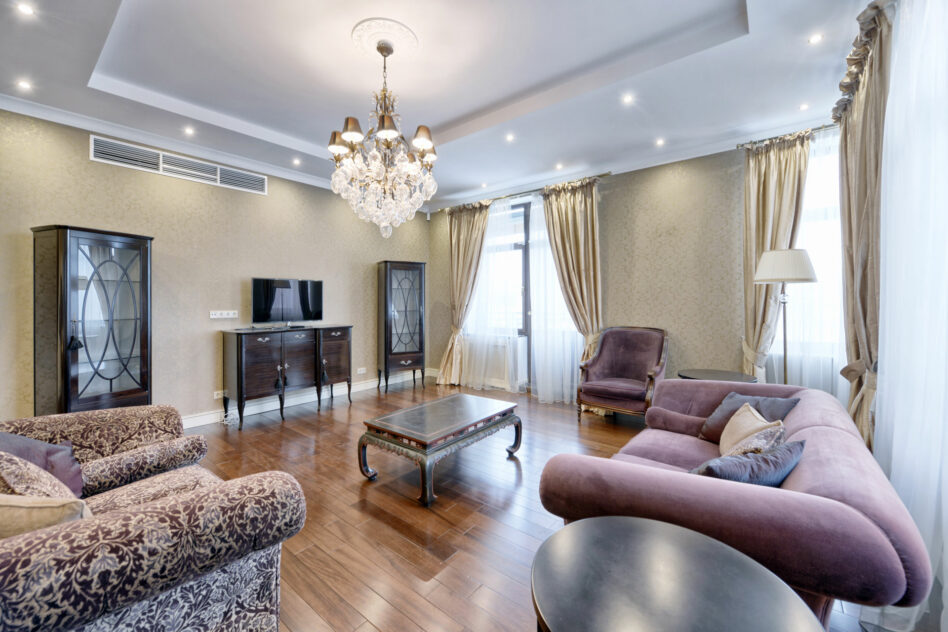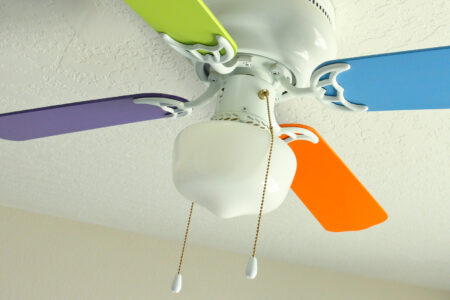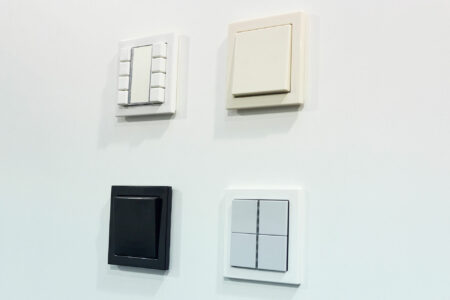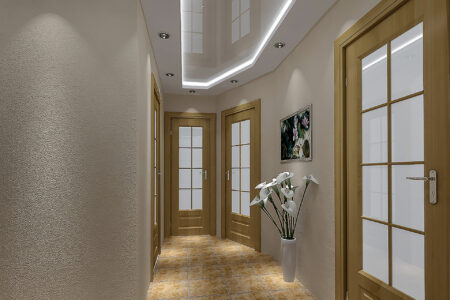Recessed lighting placement in your living room depends on your desired type of lighting. These lights are usually placed equidistant from each other based on the room’s dimensions. However, they can be arranged otherwise for accent and task lighting. We’ll show you different options below.
Planning The Placement Of Recessed Lights In Your Living Room
The way you place recessed lighting in your living room will affect the overall style and appearance of the room. Well-placed lights will make your living room appear more spacious and highlight the features you want to highlight.
In contrast, ill-placed recessed lights can make the room look smaller and darker and create a glare on your television screen. Before we get into the placement details, a reasonable consideration is using LED lights.
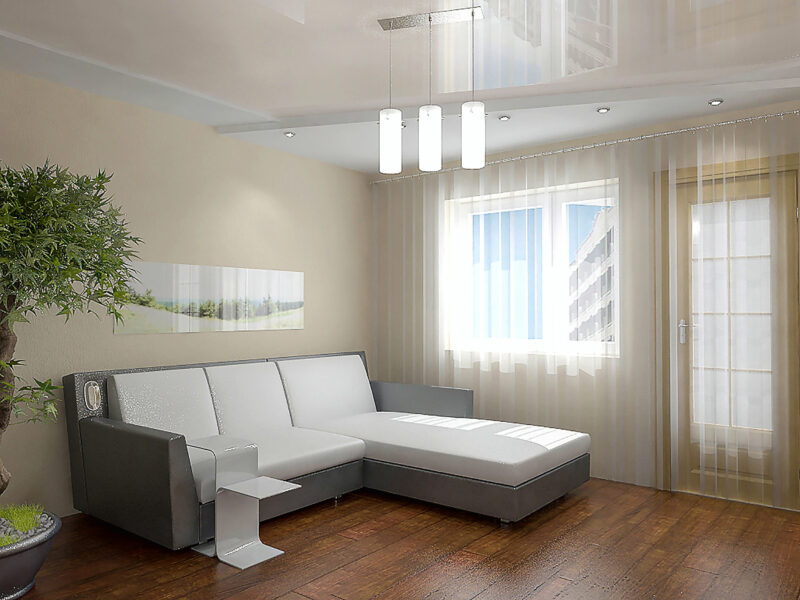
LED lights can be programmed to work independently from each other and be dimmable. This means that you can choose which lights to turn on and how bright you need them to be if you don’t need all the lights on.
Draw A Rough Sketch Of Your Living Room
Before excitedly carving holes in your ceiling, draw a rough sketch of the layout of your living room on graph paper. Drawing a rough sketch will help you plan your lighting goals. For example, do you only want ambient lighting, or is there a feature in the room that needs accent lighting?
Additionally, is there a part of the living room that needs brighter task lighting, like a bar unit or a working space? In your sketch, include significant elements like the seating, coffee table, existing lights or lamps, cabinetry, and the position of the TV.
Also, include any features you would like to highlight, as this will affect the placement and choice of your recessed lighting. Then, once you’ve done your sketch, make a couple of photocopies should you change your mind or make a mistake.
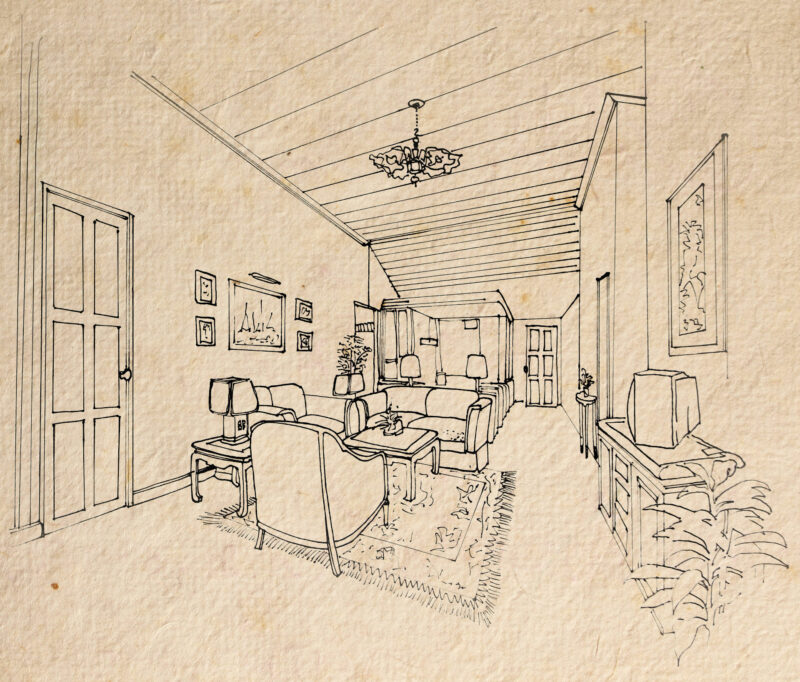
Measure The Dimensions Of Your Living Room
The dimensions of your living room will help you decide on the placement of recessed lights and how many you should install. Effectively, you need to know the area of the living room’s floor space and the ceiling’s height from the ground.
So, with your measuring tape, measure the length, width, and height of your living room. Write down these measurements on your rough sketch, then create a scale according to the blocks on your graph paper. For example, 2 blocks equal 1 foot.
To work out the area of your floor space, you must multiply the living room’s length by its width. E.g., 18 feet x 15 feet = 270 square feet that must be illuminated.
Calculating How Many Recessed Lights You Will Need
The number of recessed lights you will need will depend on the area of the room, the type of lights and trim you will use, and the ceiling’s height. For ambient lighting, the most common type for a living area, you will need to calculate the total wattage required to illuminate the room.
The rule of thumb for working out ambient lighting wattage is length x width x 1.5. This common rule is for incandescent bulbs. LED bulbs only need roughly 1/7 of the wattage to achieve the same brightness.
The calculation, using the above dimensions as an example, would be as follows:
Total wattage required = 18 x 15 x 1.5 = 405 Watts
To translate that into the number of lights needed, you would need to take the total wattage and divide it by the wattage of a standard light bulb, e.g., 45 Watts.
The calculation would be as follows:
The number of recessed lights needed = 405 ÷ 45 = 9 recessed lights.
Remember, if you use LED light bulbs, their wattage is lower, but the output is equivalent to a standard light bulb. Therefore, do not use their lower wattage for the calculation; otherwise, you will have too many lights.
Planning The Positioning Of Recessed Lights In A Living Room
If you only use ambient lighting in your living room, the lights can be arranged in an equidistant formation. To calculate how far apart the lights should be from one another, you can divide the height of the ceiling by two.
Assuming the ceiling height is 8 feet above the floor, the lights can be spaced at least 4 feet apart. However, recessed lights shouldn’t be placed near the walls or cabinets because they will cast shadows otherwise.
The minimum distance to place a recessed light from a wall is 3 feet unless you plan on accenting the wall or a feature on the wall. With these distances in mind, you can plot the configuration of your ambient recessed lights.
Accenting Features With Recessed Lighting
Suppose you want to use recessed lights as accent lighting. In that case, they need to be positioned slightly closer to the feature to be accentuated. For example, you might have an architectural feature such as a fireplace, a bookshelf, a cabinet, or some artwork you want to highlight.
Or, maybe, you want to create a wall-washing effect to make the room look more spacious. When highlighting a feature on a wall, the recessed lights can be about 12 inches away from the wall or the object.
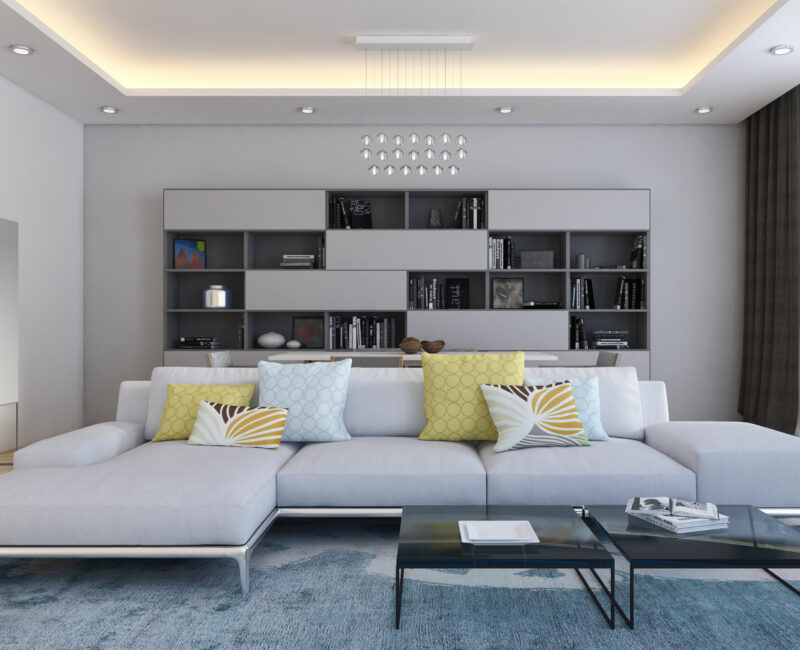
However, you can go as close as 6 inches to the wall for wall-washing. For highlighting fireplaces, it is recommended to keep recessed lights at a distance of 3 feet from the wall and instead use adjustable recessed trims to direct the light.
Additionally, when using accent lighting for 3-D objects that aren’t flush against the wall, consider using 2 or 3 recessed lights. You can set them to shine on the object from different angles. If you plan it properly, you can find adjustable trim that matches the trim of your ambient and task lights.
Recessed Task Lighting In the Living Room
Should you need brighter lighting in some areas of your living room, your recessed lights can do the job well if placed carefully. Task lights should be placed directly overhead the work surface or its edge. For improved visibility, recessed task lights should be 5 feet above the work surface.
Another place to put task lights is above potential obstacles. You’re less likely to trip over or walk into them if you can see them. However, the positioning of task lights will also depend on the beam angle.
Lights with narrower beams shouldn’t be placed directly overhead work areas or obstacles. Again, by using dimmable lights, you can lower the intensity of the task lights when you don’t need the bright light.
How To Avoid Recessed Lighting Glare On Your TV Screen
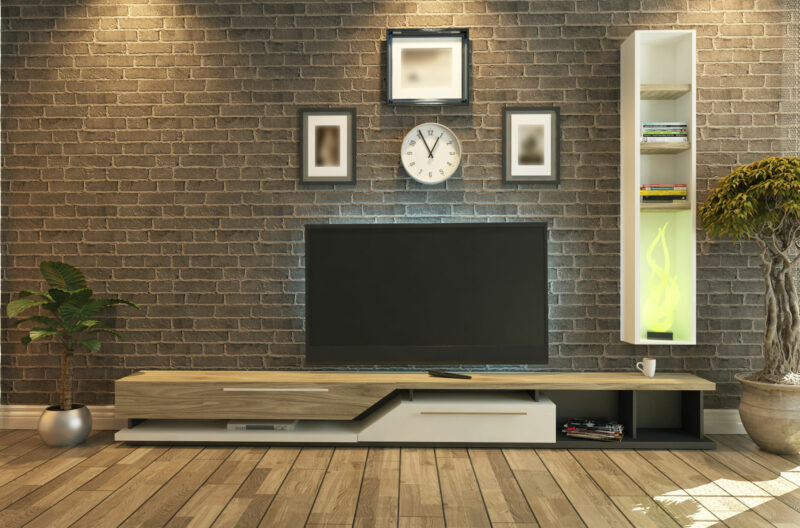
Big-screen TVs are usually mounted on the wall to increase visibility and save space. But you probably don’t want glary blind spots reflecting off the screen. A way to remedy this issue is by tilting the TV forward 1 or two degrees.
If you have an adjustable TV bracket with this function, that’s great. Alternatively, you can place an extra washer or two inside the mounting bracket when installing it, which will also do the job.
